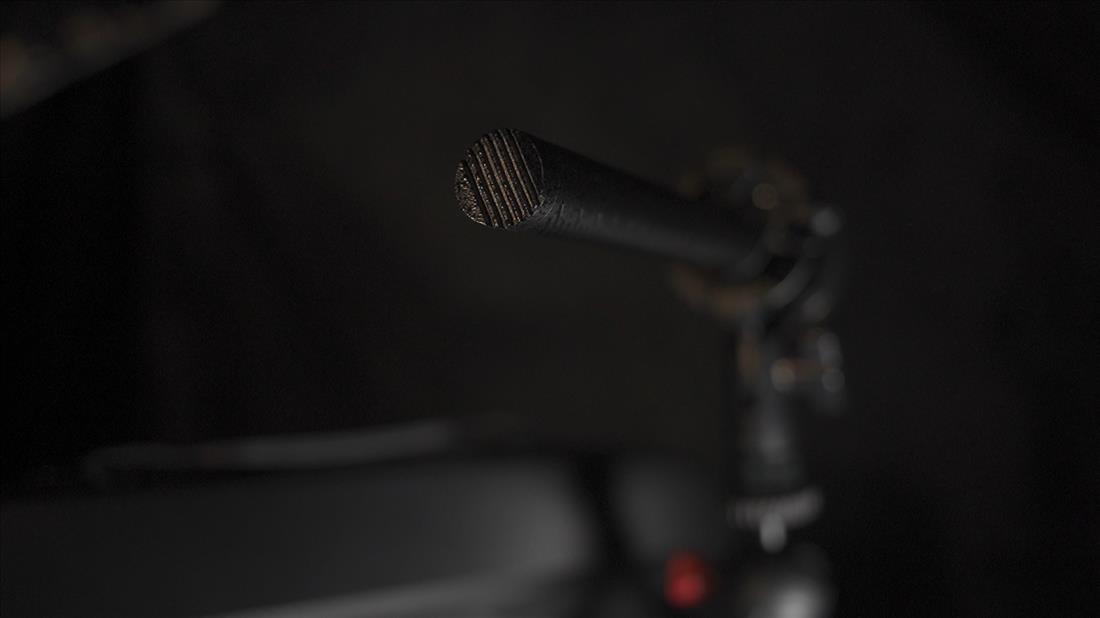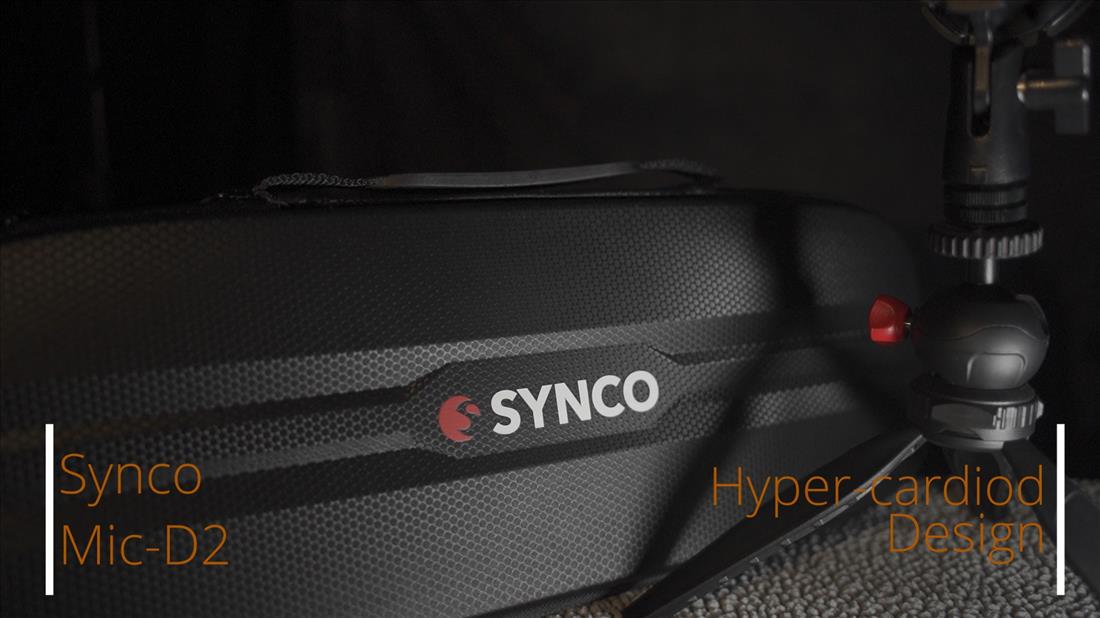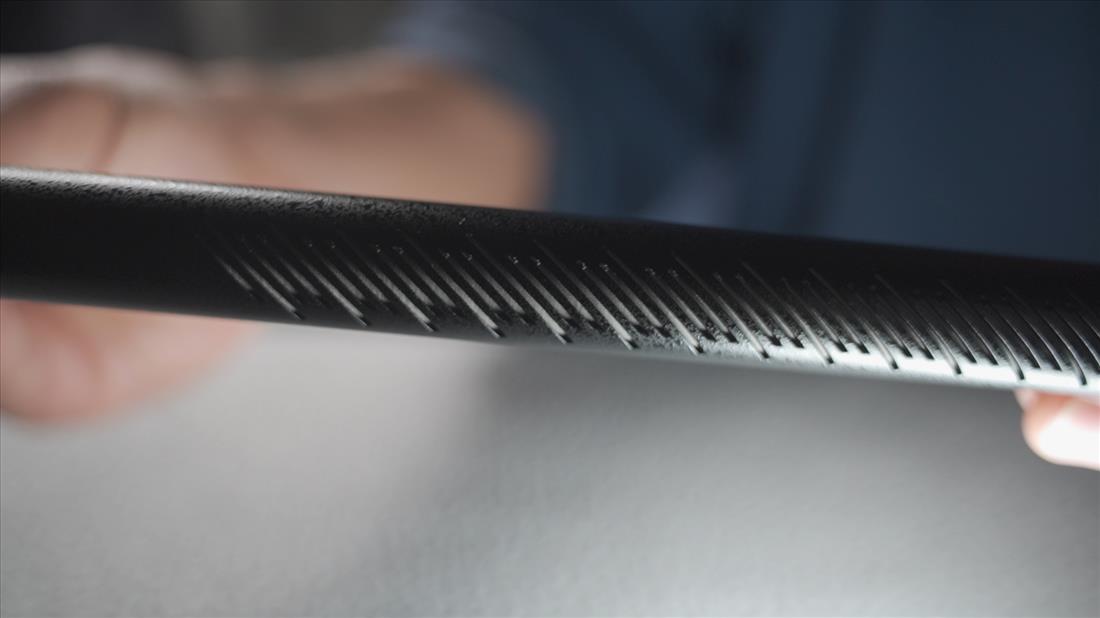Synco Mic-D2 Shotgun Review
01 Feb 2020, Posted by in Reviews, Uncategorized

Microphones… they say sound is “50% of video,” yet even though audio equipment costs a fraction of what your camera and lenses cost, we still manage to skimp on our mics and recorders. Luckily, we cheapskates may have a solution…. I recently got interested in a used Sennhesier MKH 416. This is a classic, standard, professional boom mic that finds a home in every top professional boom operator’s bag. It’s not the very top of the line, but it’s close. In my research, though, I can across another mic… the budget, $250 Synco Mic-D2: a Chinese newcomer that landed a couple of very strong reviews that compared it to the Sennheiser 416. According to Synco, they purposefully designed it to sound like the 416.
The first reviewer I saw was Mike DelGaudio at Booth Junkie – he’s a great voice over artists and YouTube reviewer who I trust. He compared the Synco to the Sennhesier 416, and concluded there was virtually no difference between the two… but his review had the limitation of being voice-over focused. His tests were all at about 6 inches, and don’t say much about how the mic will work for videographers working at greater distances and outside a sound booth.
So I did a little more research and discovered Allen Williams at Sound Speeds – this guy is a boom operator, and he’s extremely knowledgeable as well as being a good teacher on the subject. Which isn’t to say there aren’t a few limitations to his review. He’s not a professional voice artist or actor, so the shortcomings in his voice obviously color the sound. I don’t think he brought out the best in either of these mics. He also just uploaded the raw audio, but every mic falls down somewhere and needs refinement in post. That includes the Sennheiser. How well they recover themselves is completely different from how good their raw audio is, and equally important.

Of course, I’ve got my limitations as a reviewer of their reviews… that is to say we’re all restricted by YouTube’s crappy compression. It’s not just video that’s affected; audio loses its nuance, too. On YouTube, listening with headphones isn’t enough. You’ve got to hear the original audio. It would have been great to have access to all of their raw files. So here’s a link to my audio test files.
But based on what I could hear on YouTube, I agree with Booth Junkie’s assessment that there’s no difference in the noise floor – or audio quality between the Sennheiser and the Synco at 6 inches. And I agreed with Sound Speed’s assessment that there is some boominess at three inches and occasional boxiness at some of the other distances. But in listening to his test, I found that while there were nuanced differences between the mics, I sometimes confused them, and I didn’t always think the Sennheiser was the better sounding. In other words, they’re damn close in quality. So close, it led me to my own purchase of the Synco, and this review.
Now I don’t have the Sennheiser to test myself, so I compared the Synco to my Audio Technica 897. The 897 is the same price, at roughly 250 bucks, and reviewers generally agree it punches in above its weight. It just sounds better than other similarly priced mics. I’ve always felt it was the equivalent of a $400 mic. It’s flat and detailed across the spectrum, and works with a variety of voices depending on the miking distance. The Audio Technica also has a great advantage… that is also the cause of its biggest shortcoming. The mic can be powered with a single double-A battery. This means you can use it in just about every configuration, from connected directly to your camera’s input, to connecting it to a Rode Wireless Go for wireless boom miking. But it’s also a quiet mic, and it relies on good preamps to record at appropriate levels. The original Zoom h4n, for example, isn’t a good match due to it’s poor preamps.
I’ve never seen a review comparing the Audio Technica 897 to the Sennheiser 416, so I don’t know how close they are in quality. I’ve always assumed there was a fair amount distance between them, explaining why I like my audio, but I don’t love my audio. The Synco test has changed my view on this somewhat.
So let’s talk about the Synco. It’s well constructed, almost somewhat industrial feeling, but in a reassuring way. Like you could drop it off a cliff and it would be fine. The thin slots make you wonder how audio waves get in there… but they do. It’s… weird. The Synco Mic-D2 is a hyper-cardioid design, making it slightly more focused than the Audio Technica (at least theoretically). According to the manufacturer, here are the specs:
- Frequency Response: 20Hz-20kHz
- Sensitivity: -32dB
- Signal to noise ratio: 80dB
- Power Requirements 48V DC
- Weight: 165g
Now before I tell you my opinion of how the mic sounds, here’s my audio test. Click the link below and you can download the file for better listening.
So here’s my take on the Synco. The signal level of the Synco is ample. It’s a fairly loud mic. Audio Technica, a notorious quiet mic, is 12 db softer.

I don’t have a sound proofed room to test the noise floor, but Booth Junkie does, and he found it to have virtually identical noise to the Sennheiser. I’d agree that this mic has a professionally-low noise floor.
In my tests, there is a slight Boominess at 3 inches, though it sounds better if you move two inches off axis at that distance. Two inches off axis results in that rich proximity sound, like you’re inside the speaker’s head. It’s also something you can pull down in post.
The mic sounds great at 6 inches for Voice Over work. At 12-18 inches– the standard distance for a shotgun– it’s very good boom mic. And at distances beyond 18 inches I’d say it performs generally pretty well. The lower end disappears a little quickly for my tastes, but it’s nothing that can’t be recovered in post. Sound Speeds testing the distance up to about 10 feet, but honestly you should switch to a lav at about five.
Off-axis rejection is very good for both microphones. The Audio Technica is slightly softer to my ear at 90 degrees, but slightly louder and just little more muffled when directly behind the mic. The Synco picks up less at 180 degrees, and it’s a little more transparent. Overall, very similar in performance.
The Synco is a little fuller than the Audio Technica, but the Audio Technica is a little more even toned across the spectrum. At the traditional booming distance of 12 to 18 inches, I couldn’t reach a conclusion about which their raw audio sounded better, but I did find the Synco cleaned up better. My voice was brighter and clearer. Which was kind of funny because the Audio Technica took fewer points to clean up, and yet didn’t sound quite as good no matter what I did. Which is to say the 897 had fewer problems, but maybe fewer strengths than the Synco.
Now, I wish I could test it directly against the Sennheiser– that curiosity is going to nag at me for a while. I can’t know for sure, but my own tests support what Booth Junkie and Sound Speed have said: the Synco may not be quite as good as the 416, but it’s a damn strong competitor. And at one quarter the cost, you have to wonder if it’s really worth it to step up to the 416. This is especially true considering no ONE mic is the best mic for every voice.
So what do I take away from all this? First, the Synco is a great mic for the money, no matter which way you look at it. Solid build and great sound. Also, the Audio Technica is a better mic than I thought for the money, so if you’re looking for a self-powered mic, it’s a great choice. These two shotguns are very close in quality, and both of them can deliver broadcast level sound at a very affordable price. While I was initially disappointed that there wasn’t a greater improvement with the Synco, over the course of working on the video review, I actually grew more fond of it. It has a punchiness that– while not more naturalistic– is very engaging to the ear. That punch is maybe less appropriate for fom work, but energetic for commercial.
The big question is, can the Synco replace the Sennheiser 416? I can’t really say, but I know it’s darn close. Which brings me to one of my theories about mics and price. With boom mics—cardioids and hypercardioids—there’s a gulf between $250 and a $1,000. The quality, what you get for the money, increases quickly up until about $250 dollars… and then it almost levels off. You start paying hundreds for very slight increases. Until it basically taps out at around a grand. Unless you’re shooting a Hollywood film, there’s no reason to spend a four, five, six, or even eight hundred dollars on a mic. Your $250 mic will completely meet your needs. So I say, “save up until you can buy a 250 dollar mic, and then save again for a thousand. Don’t buy anything in between.” The Synco does something a bit amazing, in that even if it’s NOT the quality of the thousand dollar Sennheiser, it’s the quality of an eight hundred dollar competitor to that mic… at the price of $250. It punches in WELL above its weight.
If you have a $200 boom mic you’re happy with, you probably don’t want to upgrade… you want to learn how to get the best quality out of it. But if you’re just getting into the audio game, if you’ve got a mic designed for sitting atop your camera that you’ve been using on a boom, or you have aa cheaper shotgun mic…. Jump on this. The Synco is worth the investment. And if you’re thinking about investing in the Sennheiser MKH 416… maybe you should think again. And I don’t say that lightly. If you want great quality, but no one is expecting you to show up on set with the 416… the Synco might meet your needs.